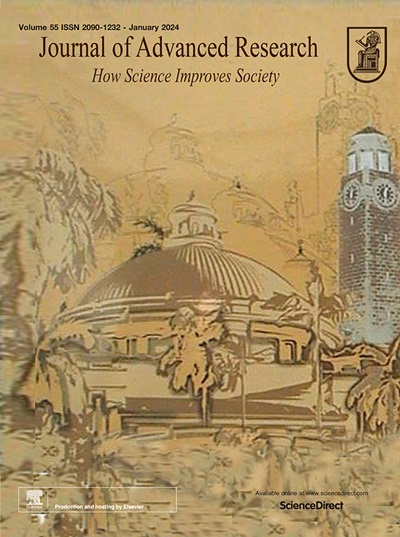暴发性心肌炎的临床病理特点
IF 11.4
1区 综合性期刊
Q1 MULTIDISCIPLINARY SCIENCES
引用次数: 0
摘要
暴发性心肌炎(FM)是最严重的心肌炎形式,其特点是临床进展迅速和循环不稳定。然而,其病理特征及其与临床表现的关系尚不清楚。目的本研究旨在概述FM的临床病理特征。方法于2021年1月至2022年9月在中国武汉招募80例FM患者。所有患者随访3 个月,行心内膜活检及组织化学染色。描述了心肌的病理特征。分析心肌炎症细胞浸润与临床表现的关系。结果苏木精和伊红染色显示,80例FM患者中有76例诊断为淋巴细胞性心肌炎,4例诊断为嗜酸性心肌炎。显微镜下观察到多种形式的细胞变性,尤其是心肌水肿和心肌细胞坏死。组织化学分析表明,先天性免疫细胞(主要是巨噬细胞和中性粒细胞)在急性期FM中占主导地位。适当的免疫调节剂治疗,如糖皮质激素和免疫球蛋白,可促进巨噬细胞向M2亚型极化。总炎症细胞浸润的高密度与炎症生物标志物(hs-CRP和ESR)水平升高和更严重的循环恶化相关,这就需要更频繁地使用IABP、ECMO和起搏器。迄今为止,基于心内膜心肌活检样本对FM进行的最大规模的组织化学分析显示,早期以先天免疫细胞浸润为主,其次是淋巴细胞浸润。这一发现提示先天免疫的激活是FM中触发细胞因子风暴的初始机制。这些结果也支持糖皮质激素和免疫球蛋白的免疫调节治疗的有益作用,而不是通过促进M2巨噬细胞极化的免疫抑制。本研究注册于https://clinicaltrials.gov/study/NCT03268642。本文章由计算机程序翻译,如有差异,请以英文原文为准。

The clinicopathologic features of fulminant myocarditis
Background
Fulminant myocarditis (FM) is the most severe form of myocarditis, characterized by rapid clinical progression and circulatory instability. However, its pathological features and their relationship to clinical presentation are not well understoodObjectives
This study aims to provide an overview of the clinicopathologic features of FM.Methods
A total of 80 patients with FM were enrolled between January 2021 and September 2022 in Wuhan, China. Endomyocardial biopsies and subsequent histochemical staining were performed on all patients who were followed up for 3 months. The pathological features of the myocardium were described. The relationship between myocardial inflammatory cell infiltration and clinical presentation was analyzed.Results
According to hematoxylin and eosin staining, 76 out of 80 patients with FM were diagnosed with lymphocytic myocarditis, while 4 were diagnosed with eosinophilic myocarditis. Microscopically, various forms of cell degeneration were observed, especially myocardial edema and cardiomyocyte necrosis. Histochemical analysis indicated that innate immune cells (primarily macrophages and neutrophils) predominated in the acute stage of FM. Proper treatment with immunomodulatory agents, such as glucocorticoids and immunoglobulin, promoted macrophage polarization into the M2 subtype. A high density of total inflammatory cell infiltration was associated with elevated levels of inflammatory biomarkers (hs-CRP and ESR) and more severe circulatory deterioration, which necessitated more frequent use of IABP, ECMO, and pacemakers.Conclusions
To date, this largest cohort of histochemical analyses of FM, based on endomyocardial biopsy samples, has revealed dominant infiltration of innate immune cells in the early stage, followed by lymphocytes. This finding suggests that the activation of innate immunity is the initial mechanism triggering the cytokine storm in FM. The results also support the beneficial effects of immunomodulatory therapy using glucocorticoids and immunoglobulins rather than immunosuppression by promoting M2 macrophage polarization. This study was registered at https://clinicaltrials.gov/study/NCT03268642.求助全文
通过发布文献求助,成功后即可免费获取论文全文。
去求助
来源期刊

Journal of Advanced Research
Multidisciplinary-Multidisciplinary
CiteScore
21.60
自引率
0.90%
发文量
280
审稿时长
12 weeks
期刊介绍:
Journal of Advanced Research (J. Adv. Res.) is an applied/natural sciences, peer-reviewed journal that focuses on interdisciplinary research. The journal aims to contribute to applied research and knowledge worldwide through the publication of original and high-quality research articles in the fields of Medicine, Pharmaceutical Sciences, Dentistry, Physical Therapy, Veterinary Medicine, and Basic and Biological Sciences.
The following abstracting and indexing services cover the Journal of Advanced Research: PubMed/Medline, Essential Science Indicators, Web of Science, Scopus, PubMed Central, PubMed, Science Citation Index Expanded, Directory of Open Access Journals (DOAJ), and INSPEC.
 求助内容:
求助内容: 应助结果提醒方式:
应助结果提醒方式:


